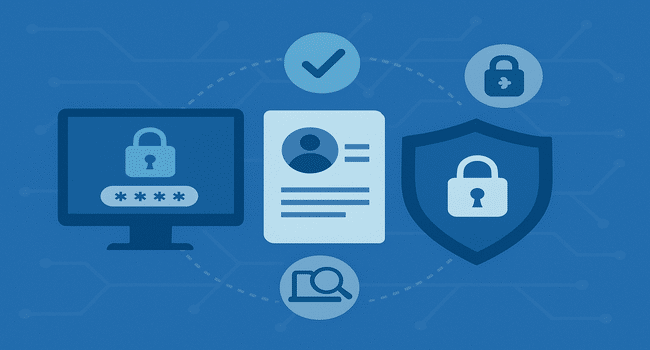Table of Contents
There’s been a lot of noise lately about security frameworks; Zero Trust, SSO, IAM, MFA and everyone seems to have an opinion. Some say single sign on authentication is a vulnerability in disguise. Others argue it’s the cornerstone of secure digital identity.
Here’s the thing: We’ve seen both views play out inside organizations. And if you’ve ever sat in a room where the CISO’s looking to stability usability with airtight manipulate, you may recognise this is not a theoretical debate. It’s an normal warfare.
So, allow’s discover the real relationship between single sign up answers and zero consider standards, inclusive of where they clash, how they align, and what they mean for employer protection.
What is Zero Trust?
You’d have probably heard some version of this: “Never trust, always verify.” That’s the foundation of zero trust security.
Unlike traditional perimeter models where everything inside the network was considered safe, Zero Trust assumes every device, user, and session could be a threat, even if it’s coming from inside the house.
Zero trust principles focus on:
- Continuous authentication and authorization
- Least privilege access
- Micro-segmentation of networks
- Real-time risk analysis
- Monitoring and logging every access attempt
You don’t get to “log in and relax.” With Zero Trust, every action is a test you must pass.
What Makes SSO Appealing?
Password fatigue is real. People hate logging in to ten different tools a day, which is where single sign on authentication comes in.
SSO lets users sign in once through a central identity provider (IdP) and access all their approved apps without re-entering credentials.
Benefits of SSO include:
- Fewer passwords reset tickets
- Easier onboarding/offboarding
- Unified identity control
- Improved user experience
But simplicity comes with concern. A compromised SSO consultation can open the door to a couple of systems, making it a potential single point of failure.
The Conflict: One-Time Login vs. Continuous Verification
Here’s the tension: Zero Trust demands continuous verification, while SSO assumes a user is safe once authenticated. It feels like a contradiction.
Some security leads worry that SSO breaks Zero Trust by letting users access multiple systems with just one login. And they’re not wrong. A weak SSO setup can undo much security progress, especially without MFA or session monitoring.
But here’s the good news: SSO doesn’t have to violate zero trust principles. When done right, it can help enforce them.
How SSO Can Support Zero Trust
Let’s break it down. These are the specific ways SSO can reinforce zero trust security when implemented thoughtfully:
- Identity as the New Perimeter
SSO centralizes authentication, allowing consistent identity checks across apps. With zero-trust security, identity is the most important layer, it’s where you verify who’s asking, not just where they’re coming from.
- MFA as a Gatekeeper
SSO with built-in MFA software is far more secure than managing separate logins for every app. It blocks phishing, enforces hardware or biometric login, and ensures stronger protection at the door.
Conditional Access Policies
SSO systems today can evaluate context:
- Is the device compliant?
- Is the user in a known location?
- Is this access behavior typical?
These rules mimic Zero Trust’s dynamic access controls.
Session Monitoring and Revocation
Modern SSO systems can song actual-time user behavior and revoke get entry to mid-session if some thing seems suspicious. We’ve seen groups installation chance-based guidelines that trigger step-up authentication if the user unexpectedly logs in from a brand new IP or downloads huge documents they typically don’t contact.
Least Privilege Access Through SSO
SSO isn’t just about logging in, it’s also about enforcing permissions. You can limit what each authenticated user can do, which aligns perfectly with least-privilege access models.
Best Practices for Merging SSO and Zero Trust
If you’re trying to bring these two together, here’s what we’ve found works best across enterprise environments:
Access Control & Policy Enforcement
- Enforce MFA at the IdP level.
- Implement device and location-based access restrictions.
- Configure short session lifetimes with refresh tokens
Identity and Permissions Management
- Use role-based access and just-in-time provisioning.
- Assign app-level access from the central IdP.
- Integrate with HR and IT systems for dynamic user lifecycle management.
Monitoring and Response
- Feed SSO logs into your SIEM for behavioral analysis.
- Set up anomaly alerts and session analytics.
- Automate session termination for high-risk behavior
How AuthX Makes SSO Zero Trust-Ready
This is where we come in. At AuthX, we’ve built our single sign on solutions with Zero-Trust in mind from the ground up.
- Our platform uses contextual MFA, which is triggered not just at login but dynamically during sessions.
- We support behavioral analytics and device posture checks, so every request is evaluated based on real-time risk.
- You can enforce fine-grained access policies and token expiration rules, which are managed through a centralized admin interface.
- And yes, we log everything. Access is traceable, revocable, and fully auditable.
The Future Isn’t Either/Or—It’s Both
The debate between Zero Trust and SSO misses the real point. They’re not enemies, they’re not even frenemies when combined intelligently, they’re powerful allies.
Single sign on authentication is about efficiency, and zero-trust security is about control. When you combine them with policy, context, and insight, you get something better than alone.
At AuthX, identity is the new perimeter. And we’ve built our platform so that your first login isn’t your last defense.
Read more on KulFiy
